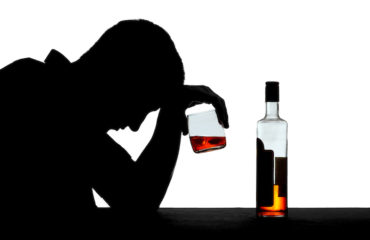Do you know someone under 21?
Does he or she drink alcohol?
If you answered yes to either question, then this article is for you, whether you are a friend, a parent, a brother or sister or just someone passing through. Every one of us can be an educator and a role model on why it is dangerous to drink at a young age.
Recently, I had the phenomenal opportunity to speak to a number of children and teens in Barbados on the issues of underage drinking. In Barbados, 16 is the minimum drinking age; however, many in that beautiful country are not aware of the age limit, let alone any effort to enforce it. As I spoke with children between the ages of 9 and 12 on the issues of drinking at a young age, they were engaged and participated in the discussion. As the audience age increased, the interest decreased. How much was due to a general attitude of disinterest by the teens or disbelief of the harms, I don’t know. But it highlighted to me the need for further efforts there and elsewhere.
The Latest Research
Here in the U.S., in 2008 a number of college and university presidents questioned the validity of the minimum legal drinking age. Called the Amethyst Initiative, they argued that the 21 year-old legal drinking age requirement was not working, resulting in a clandestine culture of binge drinking and an attitude by the students of an eroding respect for the law.
While the research supporting the laws seemed convincing to many, additional research was instituted to further examine if these laws make a difference. Case Closed: Research Evidence on the Positive Public Health Impact of the Age 21 Minimum Legal Drinking Age in the United States is the latest research to once again definitely state that the 21-year-old minimum drinking age laws have reduced alcohol consumption by America’s youth and saved lives on our roads. The additional benefit is the reduction of potential long-term consequences of alcohol dependence, adverse birth outcomes, suicides and homicides.
New Technologies Supporting the Laws
Additionally, since the passage of these laws, new scientific evidence supports their continuation. Thanks to technological advances involving brain scans, we now know that even at 21 the brain is still developing. There are important changes occurring in brain development during the teenage years. Alcohol retards these changes, and has both short- and long-term effects, including damage to:
- Memories
- Learning capabilities
- Decision–making process, and
- Reasoning ability
Overseas Comparisons
A common argument is that lower drinking ages are allowed in Europe and they have fewer alcohol problems, thus the United States should follow the European example. However, the opposite is true. A higher percentage of high school students reported getting drunk in Europe than in the States and:
“Europe has the highest per capita of alcohol use, the highest percentage of deaths attributed to alcohol, the highest burden of disease related to alcohol, and the highest prevalence of alcohol dependence.”[1]
It is also noteworthy that after New Zealand reduced its minimum drinking age from 20 to 18, there was a significant increase in alcohol-related crashes among 15-19 year olds. The increase in drinking by those 18-19 years old was followed by an increase by 16-17 years old even though for the younger ages it was still illegal.
In the United States, the National Highway Traffic Safety Administration has estimated that the 21-year-old minimum drinking age laws have saved 28,765 lives from alcohol-related crashes since 1975.[2]
Of significant concern by the Amethyst Initiative was the perception that underage drinking was running rampant with the law not being enforced. There is no question that a significant percentage of young people drink before they turn 21; however, that percentage has decreased over the past couple of decades.
Looking to the Future
Even Dr. DeJong and Mr. Blanchette agree that the laws have been “indifferently enforced and widely disobeyed.” But rather than dismantling the laws, they call for stricter enforcement and evidence-based prevention efforts.
One of the most effective prevention efforts is parental involvement. Teens report overwhelmingly that their parents are a leading factor in the decision to drink or not to drink. Allowing a teen to drink at home is not guidance; it is an abdication of responsibility. Parents have to take the time, sit down with their daughters and sons, and talk, and talk and talk. This is a conversation that has to happen numerous times. There are a number of online resources that give parents the information and tools they need to provide that guidance. These include: NIDA For Teens; Stop Alcohol Abuse; MADD’s PowerTalk 21; and The Century Council’s – Parent’s Corner.
The United States can learn a lot from other countries about making traffic safety a priority. But over the past several decades we have made significant strides in saving lives on our roads and highways. Do we have more to do in all areas? Absolutely. However, when looking specifically at underage drinking, based on the research and the current laws, this country is a leader and can be proud of the standards it has set.
[1] William DeJong, & Jason Blanchette, Case Closed: Research Evidence on the Positive Public Health Impact of the Age 21 Minimum Legal Drinking Age in the United States. Journal of Studies on Alcohol and Drugs, February 2014. p. 111.
[2] Traffic Safety Facts: Young Drivers. 2011 Data National Highway Traffic Safety Administration, DOT HS 811 744.









